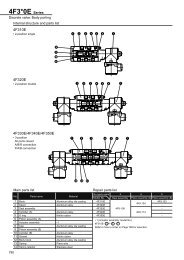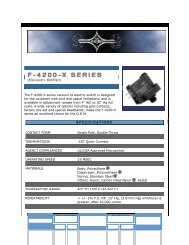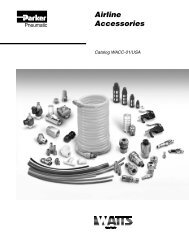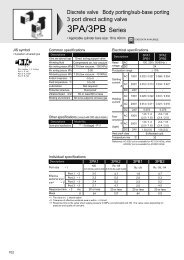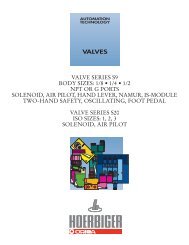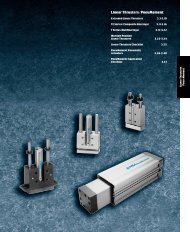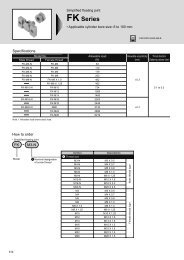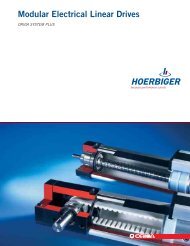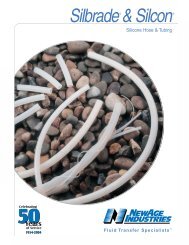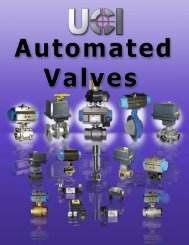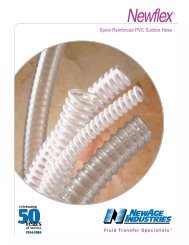Create successful ePaper yourself
Turn your PDF publications into a flip-book with our unique Google optimized e-Paper software.
SERIES “RL” ROD LOCK<br />
The TRD difference<br />
TRD’s floating rod bushing design and RL Series <strong>Rod</strong> <strong>Lock</strong> =<br />
OPTIMIZED RESULTS and Superior Performance.<br />
For rod locks to achieve the rated holding force and maximum cycle life, good<br />
alignment must be maintained between the locking mechanism and cylinder<br />
rod. With TRD’s Floating <strong>Rod</strong> Bushing design and accurate rod lock alignment–<br />
superior performance and trouble-free operation are assured.<br />
Note– Faulty alignment will cause rod damage and may drastically reduce<br />
holding force.<br />
Operating Principle<br />
CLAMPED (<strong>Lock</strong>ed) CONDITION<br />
Air Pressure Exhausted<br />
Piston/Outer <strong>Lock</strong> Housing<br />
Ball Bearings<br />
<strong>Lock</strong>ing Collar<br />
UNCLAMPED CONDITION (Free Moving Piston <strong>Rod</strong>)<br />
When air pressure is applied to rod lock, the air pressure<br />
overcomes the spring force, moving Piston/<br />
Outer <strong>Lock</strong>ing Housing. This movement provides<br />
clearance in the tapered mechanism allowing the<br />
<strong>Lock</strong>ing Collar to relax and<br />
provide free rod movement.<br />
Air pressure moves piston,<br />
compressing spring, which<br />
eliminates locking force<br />
When air pressure is exhausted from rod lock,<br />
high spring force is applied to the piston/outer lock<br />
housing which utilizes an ultra-fine tapered wedge<br />
mechanism. Ball bearings transfer the spring<br />
force directly to the locking collar. The locking<br />
collar is designed to flex and securely grip the rod.<br />
Clamping action does not move or disturb the rod,<br />
maintaining rod position during actuation<br />
Spring Force is applied directly<br />
to locking mechanism, clamping<br />
piston rod<br />
60-150 PSI Air Pressure



